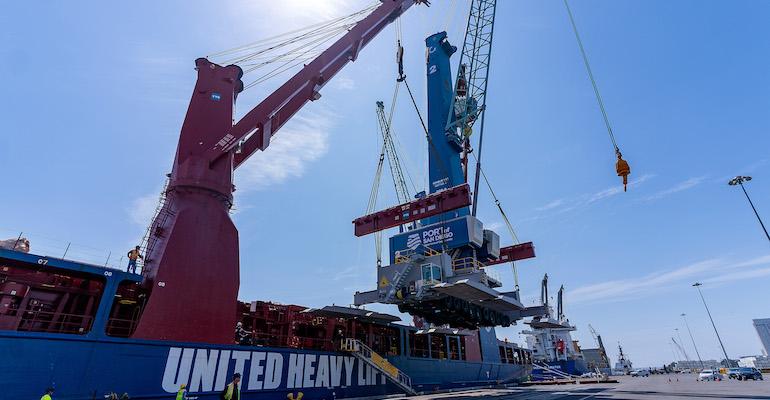"These all-electric mobile harbour cranes are a game changer for public health, the environment and our regional economy. It's win, win, win. By replacing our diesel-powered cargo handling equipment with electric equipment, such as these cranes, we continue to ensure that the air in and around the terminal is cleaner to breathe, reduce our environmental impacts and fulfil our responsibility to support commerce and jobs. in our region," said Chairman Rafael Castellanos of the Board of Harbour Commissioners of the Port of San Diego.
The cranes are expected to be operational later this year.
The Port of Diego ordered battery-electric cranes from Konecranes for approximately $14 million and spent an additional $8.9 million to make the necessary electrical infrastructure improvements to support the cranes, which included $2.7 million in grants from the San Diego County Air Pollution Control District.
The cranes will represent the highest lifting capacity of any crane system currently on the West Coast, up to 400 metric tonnes (MT) compared to the 100 MT lifting capacity of the previous diesel crane.
Most of the heavy loads destined for this region weigh more than 200 MT, including larger pieces of solar, wind and industrial power equipment, as well as project cargoes.
TAMT operates as an omni-directional cargo terminal consisting of a 38.85-hectare facility and handles breakbulk, bulk, container, and project cargoes for solar, wind and hydroelectric power facilities, steel and engines used in local shipbuilding, as well as private yachts, refrigerated cargo, sodium carbonate, sugar, reams of paper and more.
Copyright © 2024. All rights reserved. Seatrade, a trading name of Informa Markets (UK) Limited.
Add Seatrade Maritime News to your Google News feed.  |

